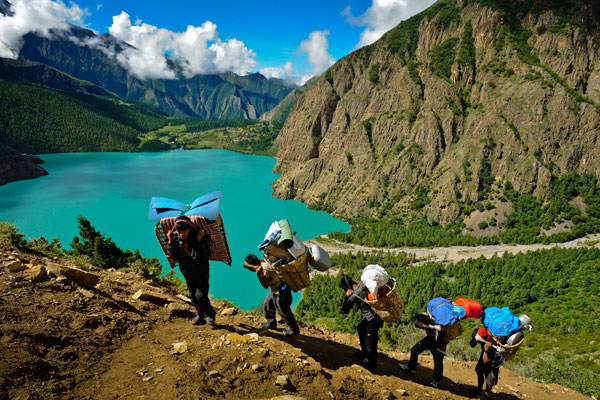
Shey Phoksundo National Park is situated in the trans-Himalayan region of north-west Nepal. It is Nepal’s largest national park. With diverse terrain and altitude variation, the park spreads over Dolpa and Mugu districts and supports broad ranges of wildlife and vegetation. Geographical landmarks of the park are the Himalayan peaks in the north and Lake Phoksundo, in the southern region. Vegetation includes pine, walnut, willow, oak, and cypress in the lower altitude and pine, spruce, juniper and birch at higher region. Berberis, wild rose and caragana are seen in alpine areas while the region higher up are mostly arid with grass alpine meadows with barely any trees. The park contains 286 flora species of botanical importance. Animals found in the region are sheep, ghoral, musk deer and langur monkeys, Himalayan tahr, Himalayan black bear and jackals. In the upper region is seen the rare and endangered snow leopard. Over 200 species of birds including yellow-throated marten, Tibetan partridge, wood snipe, whilte-throated tit, wood accentor and crimson-eared rose finch are found in the park. Other species of birds found here are Impeyan, cheer pheasant, chough, ravens, Tibetan snow cock, Tibetan twit, brown dipper, Himalayan griffon and lammergeyer. Apart from these, the park is home to 6 species of reptiles and 29 species of butterfly.
Trekking and mountaineering is very popular travelers do in the park. Since it is located in remote area, tented camping trek is the most common here in Shey Phoksundo National Park. The park can be reached by about 20-minutes’ flight from Nepalgunj. March to May and September to October is the best time to travel in this park. Lower Dolpo Trek, Upper Dolpo Trek, Jumla to Dolpo Trek and Jomsom to Dolpo Trek are some popular trekking routes in this park.